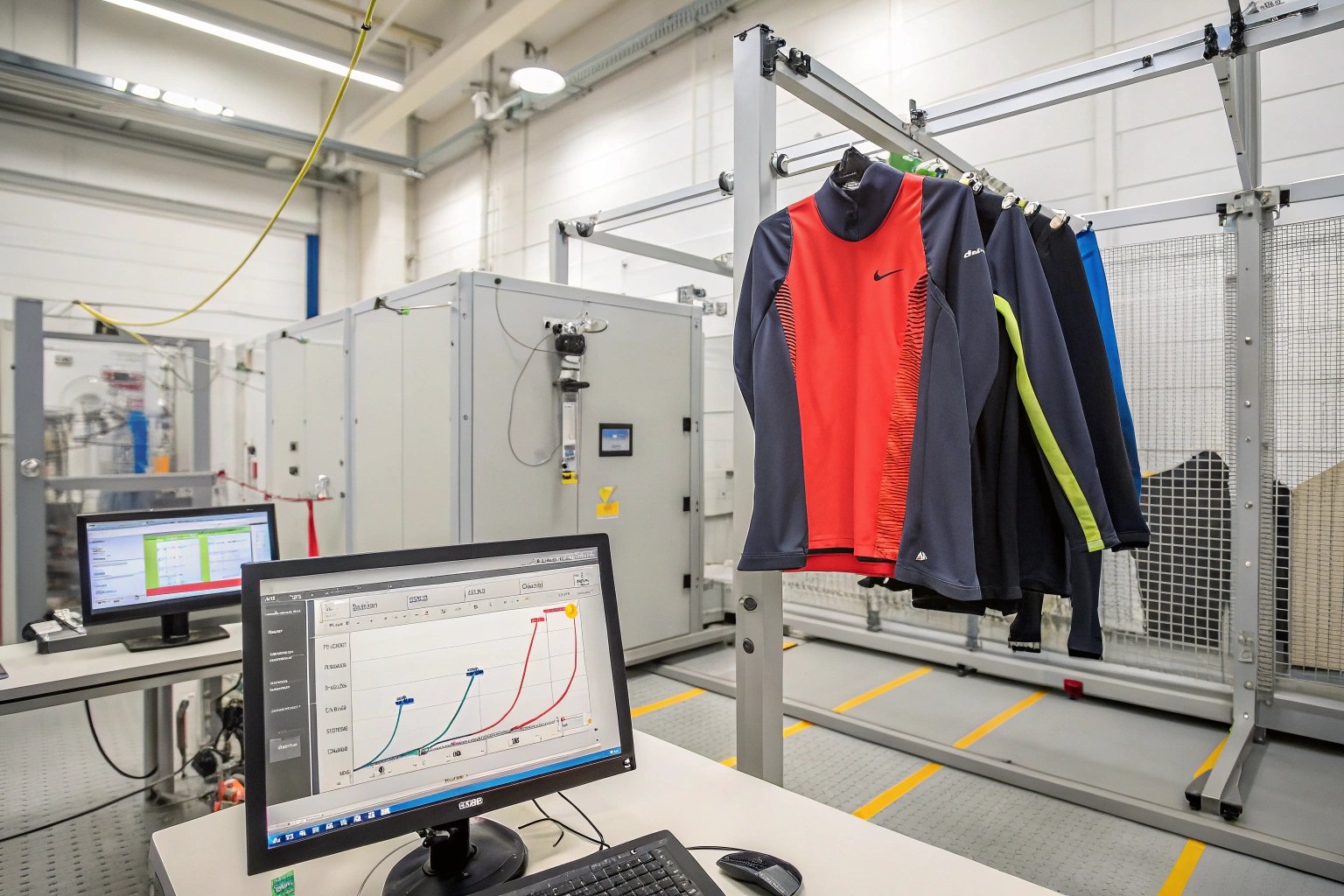In the world of performance apparel, every gram, seam, and breath of air counts. Whether it's marathon runners, pro cyclists, or gym-goers, athletes rely on apparel that cools fast, dries quickly, and breathes better than ever before. But how do brands and fabric buyers know which fabrics deliver that airflow advantage?
Airflow testing is the scientific measurement of a fabric’s breathability. It tells us how easily air passes through the fabric—directly impacting ventilation, sweat evaporation, and overall comfort during intense physical activity.
At Fumao Fabric, we supply clients across sportswear, athleisure, and outdoor performance categories. Airflow data is one of the top metrics requested by sourcing teams from Europe and the U.S. In this guide, I’ll explain why airflow testing matters and how you can use it to select elite-level fabrics for activewear production.
What Is Airflow Testing and How Is It Measured?
Airflow testing—also called air permeability testing—is the process of quantifying how much air can pass through a fabric under controlled pressure. It’s measured in units like CFM (cubic feet per minute) or L/m²/s (liters per square meter per second).
This test reveals how breathable a fabric is—vital for thermoregulation and moisture management in sportswear.
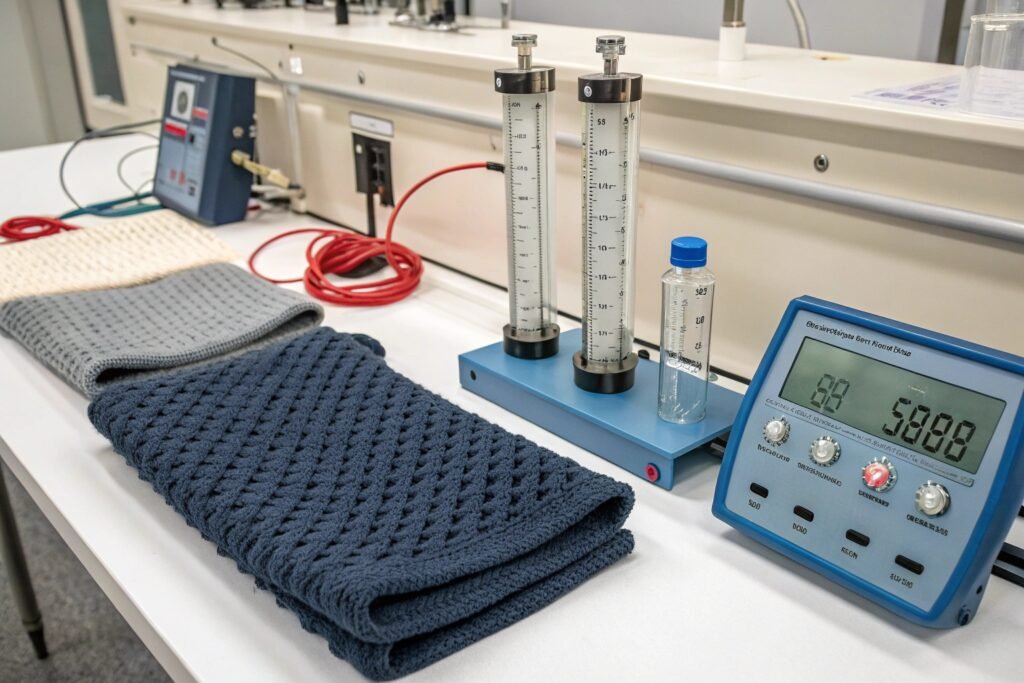
What Standards Are Used in Airflow Testing?
The two most common standards are:
- ASTM D737: Widely used in North America
- ISO 9237: Common in Europe and Asia
Both use a circular fabric sample, sealed and tested with air flow under specific pressure. Labs like SGS and Intertek provide certified testing services for these standards.
At Fumao, we offer in-house airflow testing in compliance with both standards, depending on client needs and market destinations.
What Equipment Is Used in Testing?
Modern airflow testing uses devices like the FX 3300 LabAir or Textest FX 3300, which deliver precise readings and support digital tracking. Some brands now use connected IoT-enabled test benches for real-time QC reporting and cloud uploads.
Tools from SDL Atlas and MesdanLab are commonly used in certified testing environments worldwide.
Why Does Airflow Matter for Athlete Performance?
Breathability is key to athletic comfort. When a fabric allows hot air and moisture vapor to escape, it keeps the skin cooler and drier. Without airflow, heat and sweat build up, causing discomfort and performance drop.
High-airflow fabrics help regulate body temperature, reduce sweat pooling, and minimize skin irritation during workouts.
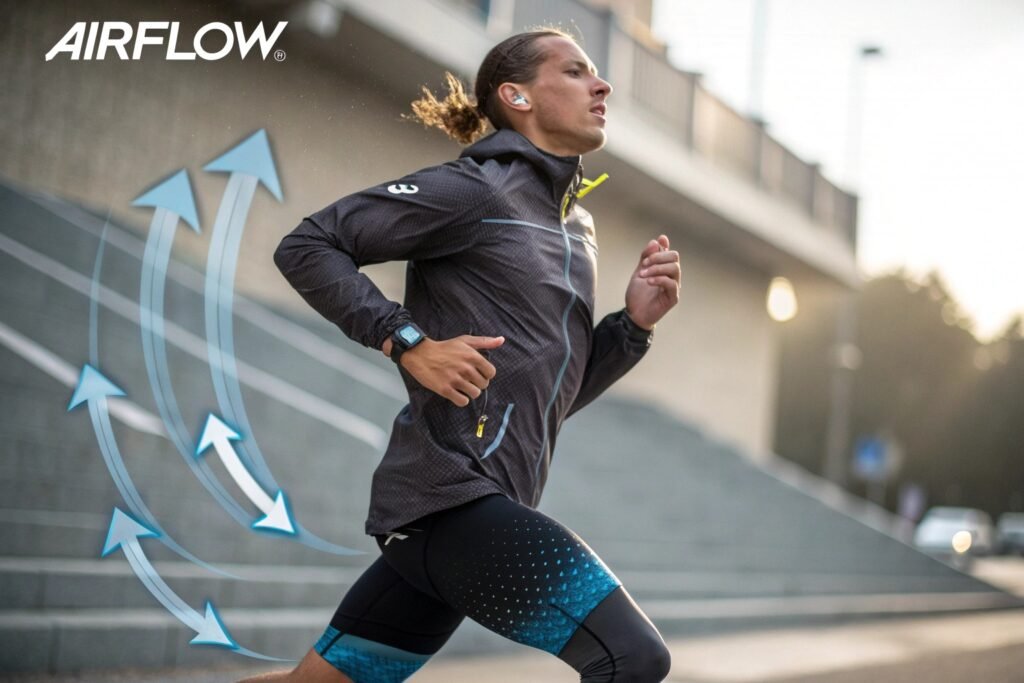
What Sportswear Applications Demand High Air Permeability?
- Running tees: Especially for long-distance or heat-intensive runs
- Cycling jerseys: Where ventilation panels reduce sweat zones
- Training tanks and sports bras: Where airflow aids in quick drying
- Compression sleeves and base layers: Need balance of stretch and breathability
Fabrics like Polartec Delta and DryTex Comfort are benchmark examples of airflow-optimized performance knits.
How Does Airflow Impact Thermal Comfort?
Airflow enables convective cooling—the body’s ability to lose heat via air exchange. A fabric with poor airflow may feel clammy and hot. With proper permeability, athletes maintain stable internal temperatures even in hot environments.
Smart sportswear brands monitor airflow zones using Thermal Manikins or wearable sensors to optimize garment design around high-heat output areas.
Which Fabrics Have the Best Airflow Properties?
Not all fabrics breathe equally. Generally, knitted fabrics have better airflow than woven, especially when constructed with open structures or engineered mesh.
The best fabrics for airflow include: polyester mesh, nylon-spandex microknit, bamboo jersey, and recycled poly open-weave blends.
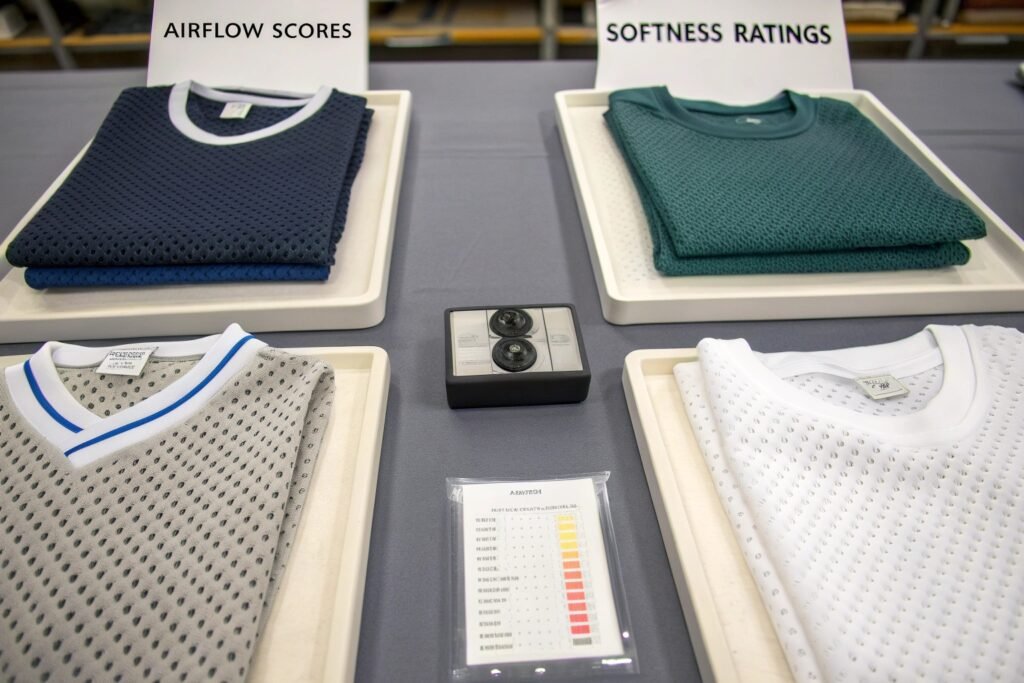
What’s the Role of Fabric Structure in Airflow?
- Open-knit mesh: Maximizes airflow, used in underarms or back panels
- Micro-perforated jersey: Balances softness with airflow
- Warp-knit spacer fabrics: Used in padded zones needing ventilation
Technologies like Coolmax AIR or HeiQ Smart Temp blend structural airflow with thermoregulating finishes.
We at Fumao offer dozens of airflow-rated fabrics tested under ASTM and ISO benchmarks, including hybrid eco-mesh for sustainable sportswear brands.
How Do Blends Affect Air Permeability?
Blends with spandex tend to reduce airflow slightly due to fiber density. However, spandex also provides stretch and shape retention. Adding bamboo or modal can enhance breathability due to lower fiber friction.
Buyers should test both fabric and garment airflow—because stitching, bonding, and lining can all impact final performance.
How Can Buyers Evaluate Airflow During Sourcing?
It’s not enough to ask “Is the fabric breathable?”—you need numbers. Ask suppliers to provide airflow reports with lab certification or conduct third-party testing.
Review CFM or L/m²/s values, match them to the garment’s application, and compare samples side by side under test conditions.
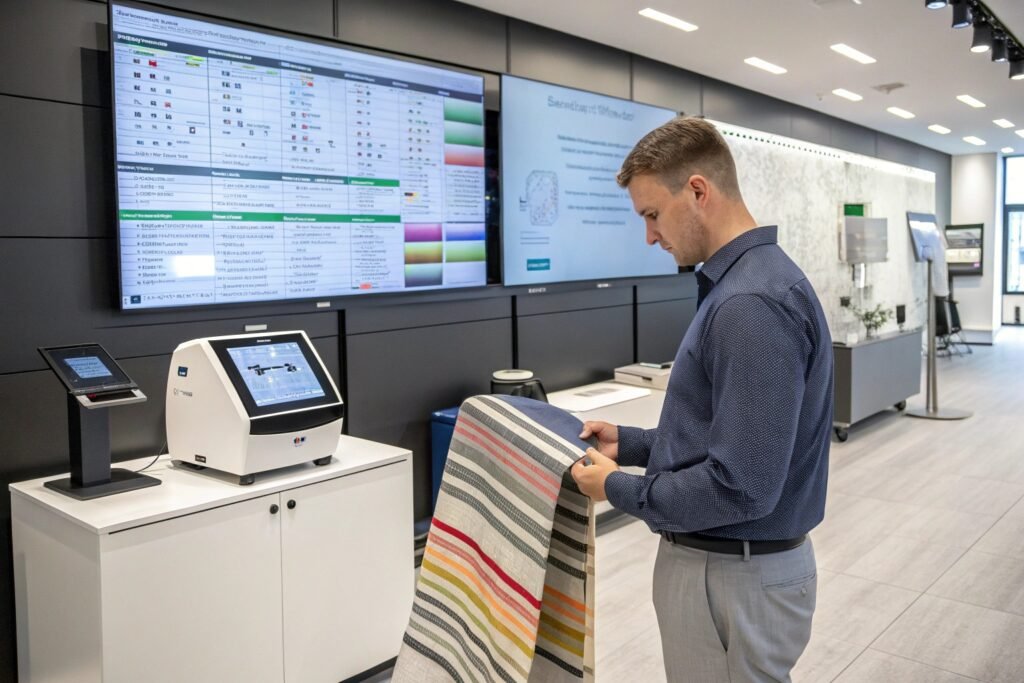
What Airflow Values Are Considered Good?
For performance sportswear:
- Basic knits: 80–120 L/m²/s
- High-performance mesh: 200+ L/m²/s
- Compression/stretch fabrics: 40–70 L/m²/s
Use comparative testing between candidate fabrics and benchmark samples. If your reference is a Nike Dri-FIT tee, request suppliers to match its permeability range.
Can Airflow Be Simulated in Virtual Sampling?
Yes. With tools like Browzwear and CLO 3D, airflow simulation can visualize ventilation zones, airflow patterns, and fabric behavior under movement. These tools integrate airflow data into design phase, saving time and prototyping costs.
At Fumao, we integrate airflow test values into digital tech packs so designers can align material specs with garment performance from day one.
Conclusion
Airflow testing isn’t just a lab metric—it’s the secret behind sportswear that breathes, cools, and performs. For buyers sourcing athletic fabrics, understanding and evaluating air permeability can mean the difference between mediocre and market-leading gear. At Fumao Fabric, we offer lab-tested, high-performance materials backed by airflow reports, responsive R&D, and global compliance. When the heat’s on, trust airflow-tested fabrics to keep your customers cool.

